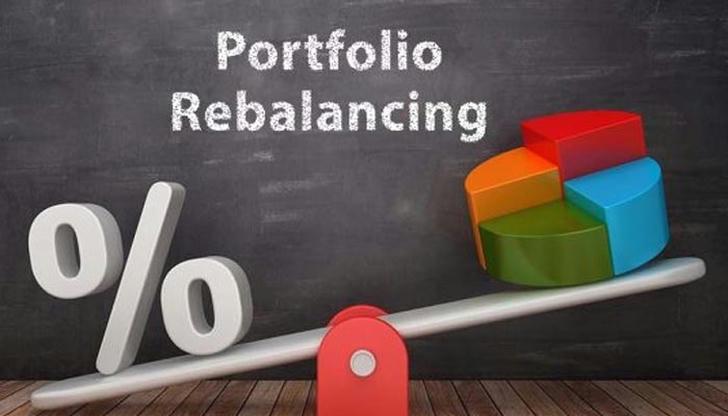9 Ways to Optimize Your Retirement Savings

Retirement might feel like a distant dream, but the truth is — the sooner you start planning, the better off you’ll be. Whether you’re just starting your career, juggling family expenses, or getting closer to retirement age, making smart choices with your savings can make a world of difference.
But let’s be honest — figuring out the best ways to grow your nest egg can feel overwhelming. Should you focus on maxing out your 401(k)? What about investing? And how do you know if you’re on the right track?
Don’t worry. You’re not alone. In this article, we’ll walk through nine practical strategies to help you optimize your retirement savings, no matter where you are on your financial journey. From taking advantage of employer perks to making simple tweaks to your spending habits, these tips are designed to help you build a more secure future — and maybe even retire a little earlier than you thought!
Ready to take control of your retirement savings? Let’s dive in.
1. Start Early and Contribute Consistently

Ever heard the saying, “The best time to plant a tree was 20 years ago. The second-best time is now”? The same goes for saving for retirement. Starting early gives your money more time to grow, thanks to the magic of compound interest — basically, it’s when your money starts earning money.
Imagine this: if you put away just $100 a month starting at age 25, you could end up with over $250,000 by the time you’re 65 (assuming a 7% annual return). But if you wait until 35 to start? You’d only have about half that amount. Time really is money!
The key is consistency. Even if you can’t save a lot at first, making regular contributions — no matter how small — adds up over time. Set up automatic transfers into your retirement account so you’re not tempted to spend that money. It’s like paying your future self first. Trust me, future you will be grateful!
2. Diversify Your Investment Portfolio

Diversifying your portfolio means spreading your money across different types of investments — like stocks, bonds, and real estate — so if one area takes a hit, the rest of your savings won’t go down with it.
Why does this matter? Because markets go up and down. One year stocks might soar, and the next, they could tumble. But by mixing things up, you’re not relying on just one type of investment to carry you through.
If you’re not sure where to start, many retirement accounts offer “target-date funds.” These automatically adjust the mix of investments for you based on when you plan to retire — it’s like having a financial autopilot. Easy, right?
3. Maximize Employer-Sponsored Retirement Plans

If your job offers a retirement plan, like a 401(k), you’ve hit the jackpot — especially if they offer matching contributions. Think of it as free money. Let’s say your employer matches 100% of your contributions up to 5% of your salary. If you’re not contributing at least that 5%, you’re leaving money on the table.
Even if you can’t max out your contributions right away, aim to increase them little by little each year, especially when you get a raise. It’s a painless way to grow your savings without feeling the pinch.
And here’s a bonus: contributions to traditional 401(k)s are pre-tax, meaning you lower your taxable income while saving for the future. Win-win!
So, if you haven’t signed up for your employer’s plan yet — or aren’t taking full advantage — now’s the time to fix that. Your future self will thank you.
4. Utilize Tax-Advantaged Accounts

Who doesn’t love saving money on taxes? Tax-advantaged accounts are one of the easiest ways to give your retirement savings a serious boost. These accounts — like Traditional IRAs, Roth IRAs, and 401(k)s — offer special tax benefits that can help your money grow faster.
Here’s the deal: with a Traditional IRA or 401(k), the money you contribute is tax-deductible right now, which means you’ll pay less in taxes this year. The catch? You’ll pay taxes when you withdraw the money in retirement. On the flip side, a Roth IRA lets you pay taxes upfront, but your withdrawals in retirement are completely tax-free. Imagine pulling out thousands of dollars down the road without giving Uncle Sam a dime — pretty sweet, right?
Not sure which one is right for you? Think about your current tax bracket versus where you expect to be in retirement. If you’re in a higher tax bracket now, a Traditional IRA might save you more. If you expect to be in a higher bracket later, a Roth IRA could be a game changer. Either way, these accounts are like secret weapons for building wealth — don’t leave them untouched!
5. Regularly Rebalance Your Portfolio

Imagine making a perfectly balanced smoothie — fruits, veggies, protein, and just the right amount of sweetness. But if you leave it sitting out for too long, the ingredients separate. Your investment portfolio works the same way.
Over time, the value of your investments will shift. Maybe stocks did great this year and now make up a bigger slice of your portfolio than you originally planned. That’s when it’s time to rebalance — basically, adjusting your investments to get back to your ideal mix.
Why bother? Because too much of one thing can throw off your risk level. If stocks skyrocket and you don’t rebalance, your portfolio could become riskier than you intended. On the flip side, if bonds become overweight, you might miss out on potential growth.
A good rule of thumb is to check your portfolio at least once a year. Many retirement accounts even offer automatic rebalancing, so you can set it and forget it. Think of it as giving your investments a yearly check-up to keep things running smoothly.
6. Choose Low-Cost Investment Options

Here’s a sneaky fact: investment fees can quietly eat away at your retirement savings. Even a seemingly tiny fee — say 1% — can add up to tens of thousands of dollars over a few decades. Yikes!
That’s why it pays (literally) to choose low-cost investment options like index funds and ETFs (exchange-traded funds). These funds track entire markets, like the S&P 500, rather than relying on expensive fund managers trying to beat the market. The best part? They often perform just as well — if not better — over the long run.
How do you spot a good fund? Look at the expense ratio — that’s the annual fee you pay as a percentage of your investments. Aim for funds with an expense ratio under 0.5%, or even lower if possible. It might not seem like a big deal now, but over 20 or 30 years, those savings add up fast.
A little research can save you a fortune. Your retirement fund will thank you.
7. Adjust Savings Rate with Life Changes

Life doesn’t stand still — and neither should your savings plan. As you move through different stages of life, your financial situation changes. Maybe you land a new job with a higher salary, pay off a big debt, or welcome a new family member. Each of these moments is a perfect time to revisit your retirement contributions.
For example, when you get a raise, it’s tempting to upgrade your lifestyle right away. But what if you put just a portion of that raise into your retirement fund? You wouldn’t even feel the difference, but your future self would reap the rewards. Similarly, if you pay off a loan, why not redirect those payments toward your savings?
The goal is to keep increasing your contributions over time. Even small bumps — like raising your savings rate by 1% each year — can lead to massive growth over the long term. Life changes, and your savings should grow right along with it.
8. Monitor and Optimize Investment Performance

Would you drive across the country without checking your gas gauge? Probably not. The same goes for your retirement savings — you need to keep an eye on how your investments are performing.
Set a reminder to check in on your portfolio once or twice a year. Look at things like returns, fees, and whether your investments still match your risk tolerance and long-term goals. If something seems off — like a fund that’s consistently underperforming — it might be time to make some changes.
Also, don’t fall into the trap of “set it and forget it.” Markets shift, personal goals change, and staying in the know helps you make smarter decisions. If optimizing investments feels overwhelming, there are plenty of tools (or even robo-advisors) that can help simplify the process. A little attention goes a long way!
9. Seek Professional Financial Advice

Let’s be honest — retirement planning can feel like learning a foreign language. That’s where a financial advisor can be a game-changer. Whether you’re just getting started or fine-tuning your plan, having an expert in your corner makes a world of difference.
A good advisor will help you set realistic goals, choose the right investments, and make sure you’re not missing out on any opportunities to grow your wealth. Plus, they’ll help you navigate big life changes and keep your plan on track. Think of them as your financial GPS, guiding you toward a smooth retirement journey.
If hiring a full-time advisor isn’t in the cards, even a one-time consultation can give you valuable insights and help you avoid costly mistakes. After all, your future is worth the investment.
